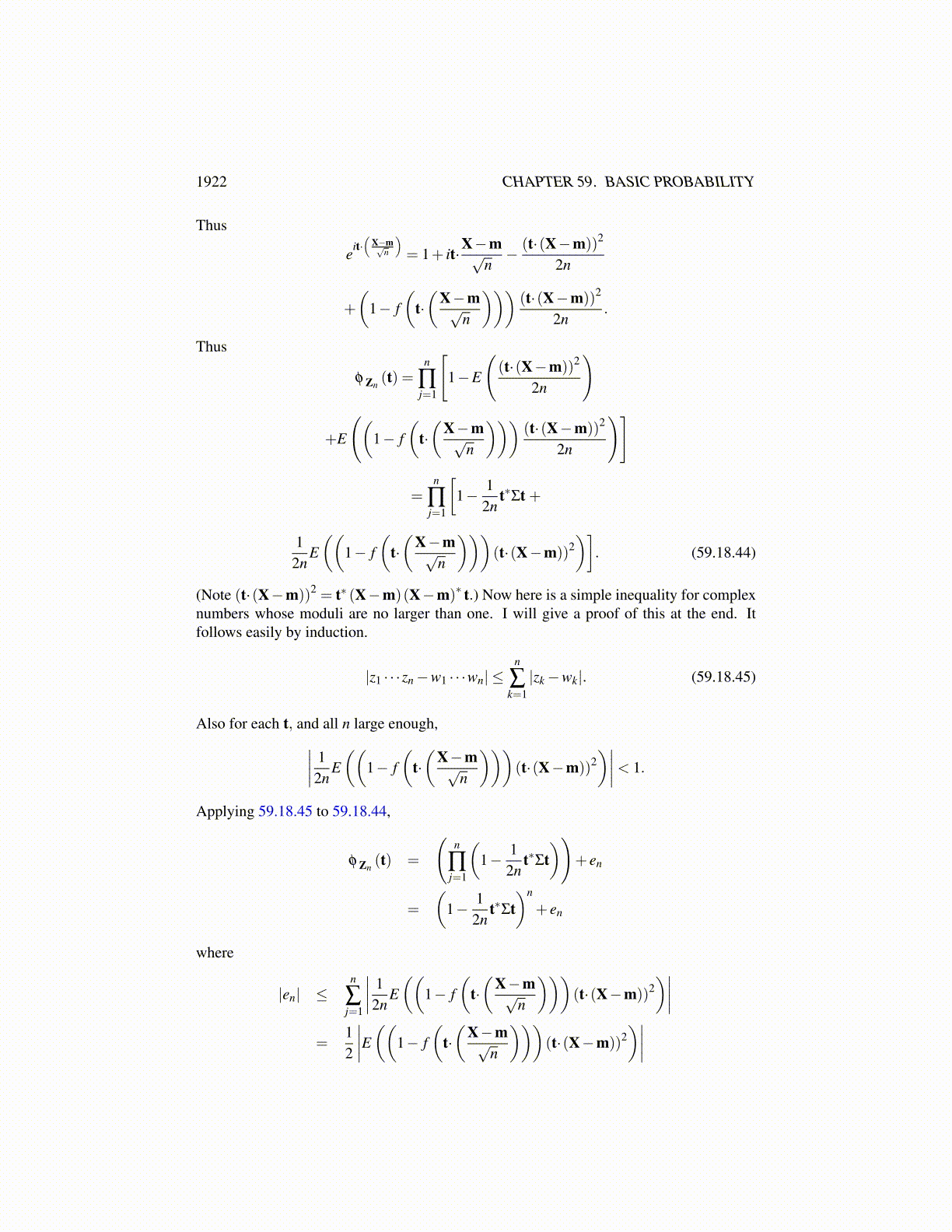
1922 CHAPTER 59. BASIC PROBABILITY
Definition 59.18.5 Let µ be a Radon measure on Rp. A Borel set, A, is a µ continuity setif µ (∂A) = 0 where ∂A≡ A\ int(A) and int denotes the interior.
The main result is the following continuity theorem. More can be said about the equiv-alence of various criteria [19].
Theorem 59.18.6 If φ Xn(t)→ φ X (t) then λ Xn (A)→ λ X (A) whenever A is a λ X continu-
ity set.
Proof: First suppose K is a closed set and let
ψk (x)≡ (1− k dist(x,K))+.
Thus, since K is closed limk→∞ψk (x) = XK (x). Choose k large enough that∫Rp
ψkdλ X ≤ λ X (K)+ ε.
Then by Lemma 59.18.4, applied to the bounded uniformly continuous function ψk,
lim supn→∞
λ Xn (K)≤ lim supn→∞
∫ψkdλ Xn =
∫ψkdλ X ≤ λ X (K)+ ε.
Since ε is arbitrary, this shows
lim supn→∞
λ Xn (K)≤ λ X (K)
for all K closed.Next suppose V is open and let
ψk (x) = 1−(1− k dist
(x,VC))+.
Thus ψk (x) ∈ [0,1] ,ψk = 1 if dist(x,VC
)≥ 1/k, and ψk = 0 on VC. Since V is open, it
followslimk→∞
ψk (x) = XV (x).
Choose k large enough that ∫ψkdλ X ≥ λ X (V )− ε.
Then by Lemma 59.18.4,
lim infn→∞
λ Xn (V )≥ lim infn→∞
∫ψk (x)dλ Xn =
=∫
ψk (x)dλ X ≥ λ X (V )− ε
and since ε is arbitrary,lim inf
n→∞λ Xn (V )≥ λ X (V ).